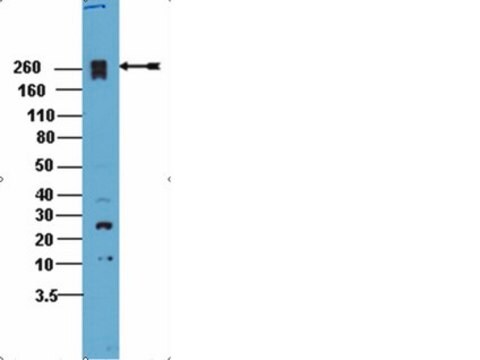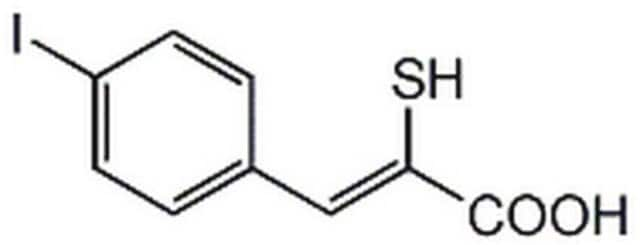208733
Calpain Inhibitor Set
The Calpain Inhibitor Set controls the biological activity of Calpain. This small molecule/inhibitor is primarily used for Protease Inhibitors applications.
Synonym(s):
Calplain inhibitor
About This Item
Recommended Products
Quality Level
form
solid
potency
8 nM Ki
manufacturer/tradename
Calbiochem®
storage condition
OK to freeze
desiccated
protect from light
shipped in
ambient
storage temp.
−20°C
General description
More recently, attention has been focused on the pathological significance of calcium accumulation in the central nervous system following cerebral ischemia and traumatic brain injury. Over-activation of NMDA, kainate, and AMPA receptors in the brain leads to sustained influx of Ca2+ through the voltage-gated calcium channels. Overexpression of calpains has been positively linked to both acute and chronic neurodegenerative processes including ischemia, trauma, and Alzheimer′s disease. In Alzheimer′s disease the ratio of active (76 kDa) to inactive (80 kDa) µ-calpain is reported to be much higher Calpain-dependent proteolysis is usually the late-stage common pathway towards cell death induced by excitotoxic compounds, hence, a selective inhibition of calpains to limit neuronal damage appears to be a viable therapeutic measure.
Biochem/physiol Actions
calpain 1, calpain 2
Packaging
Warning
Other Notes
Kampfl, A., et al. 1997. J. Neurotauma14, 121.
Sorimachi, H., et al., 1997. Biochem. J.328, 721.
Bartus, R.T., et al. 1995. Neurol. Res.17, 249.
Wang, K.K.W., and Yuen, P-W. 1994. Trends Pharmacol. Sci.15, 412.
Saito, K., et al. 1993. Proc. Natl. Acad. Sci. USA90, 2628.
Goll, D.E., et al. 1992. BioEssays14, 549.
Legal Information
Storage Class Code
11 - Combustible Solids
Certificates of Analysis (COA)
Search for Certificates of Analysis (COA) by entering the products Lot/Batch Number. Lot and Batch Numbers can be found on a product’s label following the words ‘Lot’ or ‘Batch’.
Already Own This Product?
Find documentation for the products that you have recently purchased in the Document Library.
Customers Also Viewed
Related Content
Select different protease inhibitor types based on your needs to prevent protein degradation during isolation and characterization and safeguard proteins in sample prep.
Select different protease inhibitor types based on your needs to prevent protein degradation during isolation and characterization and safeguard proteins in sample prep.
Select different protease inhibitor types based on your needs to prevent protein degradation during isolation and characterization and safeguard proteins in sample prep.
Select different protease inhibitor types based on your needs to prevent protein degradation during isolation and characterization and safeguard proteins in sample prep.
Our team of scientists has experience in all areas of research including Life Science, Material Science, Chemical Synthesis, Chromatography, Analytical and many others.
Contact Technical Service





![1,1′-[4,8-Bis[5-(2-ethylhexyl)-2-thienyl]benzo[1,2-b:4,5-b′]dithiophene-2,6-diyl]bis[1,1,1-trimethylstannane]](/deepweb/assets/sigmaaldrich/product/structures/611/912/a638a6fe-ca7b-4674-8023-df4c0921a9fd/640/a638a6fe-ca7b-4674-8023-df4c0921a9fd.png)





